1. What You Can Do
1.1. Hire humble managers
1.1.1. People who don't think they're better than their subordinates
1.2. Hire good listeners
1.2.1. People who are likely to seek out other people's input and ideas
1.3. Make sure your managers are engaged and know what's going on at the front lines
1.4. Example: Toyota
1.4.1. One of Toyota's most important managerial concepts is "Going to the gemba"
1.4.1.1. "Gemba" is Japanese and refers to the place where the real work is done
1.4.2. What really matters to a company happens at the gemba, so Toyota focuses on making things as efficient and productive at the gemba as possible
2. How to Streamline Your Organization
2.1. Eliminate needless bureaucracy
2.1.1. "Cut the red tape"
2.1.2. Give staff the power to make decisions themselves whenever possible
2.1.3. Otherwise, create simple, predictable approval processes that will ensure ideas are implemented as quickly as possible
2.2. Establish clear, understandable goals
2.2.1. Don't use incomprehensible jargon when speaking to staff
2.3. Make it easy for departments to work together
2.3.1. Tip: Implement collaborative software that improves communication across departments
2.3.1.1. e.g. MindMeister for collaborative brainstorming and ideation
2.3.1.2. e.g. MeisterTask for collaborative task and project management
3. How to Promote Innovation in Your Company
3.1. Be patient.
3.1.1. Give your employees the time and space to come up with creative ideas
3.1.2. e.g. incorporate "brainstorming time" into the work schedule
3.1.2.1. See also
3.1.2.1.1. Online Brainstorming with Mind Maps (Tutorial)
3.2. Deliberately overstaff teams to give them the resources to implement ideas.
3.3. Reward innovation.
3.3.1. Reward ideas during performance reviews and when considering bonuses and promotions
4. How to Become an Idea-Driven Organization
4.1. Use the Kaizen teian system
4.1.1. = Philosophical approach about how small changes, applied over a long period of time, lead to significant benefits
4.1.2. All employees, from CEO to assembly-line workers, play a role in facilitating change.
4.2. Use the idea meeting process
4.2.1. Prompt employees to bring "opportunities for improvement" to team meetings, where they can be discussed and subsequently implemented
4.3. Use the idea board process
4.3.1. This approach combines idea meetings with a large idea board
4.3.1.1. Allowing staff to collect and process ideas visually.
4.3.1.2. Tip: Use a mind map tool like MindMeister to collect & visualize ideas
4.3.2. Idea boards keep visibility of ideas front and center
4.3.3. They also create social pressure to complete assigned tasks on time.
5. ABOUT THIS BOOK
5.1. Title
5.1.1. The Idea-Driven Organization
5.1.2. Unlocking the Power of Bottom-Up Ideas
5.2. Authors
5.2.1. Dr. Alan G. Robinson
5.2.1.1. Award-winning author, educator, researcher and consultant
5.2.1.2. @alangrobinson
5.2.2. Dr. Dean M. Schroeder
5.2.2.1. Award-winning author, consultant & scholar
5.2.2.2. @deanmschroeder
5.3. Website
5.4. Get it on Amazon
5.4.1. Or read a sample chapter
6. Which Questions Does This Book Answer?
6.1. Why an organization's most important source of innovation are its front-line employees
6.2. How you can align every part of your organization around generating and implementing employee ideas
6.3. How you can unlock creativity in your company
7. The Key to Success Is The Ability to Come up With Great Ideas
7.1. Constant innovation is crucial in order to stay competitive
7.2. But managers, although they seem to have a bird's eye view of everything, are not necessarily the best people to come up with new ideas
8. Front-Line Employees Have Valuable Insights
8.1. They are the ones who interact with the customers on a daily basis, face-to-face
8.2. They know their problems, frustrations and wishes
8.3. They know what will make them happy
8.3.1. Happy customers spend more money & are more likely to recommend your products/services to others
8.4. Implementing employee-generated ideas is your best bet of making customers happy
8.5. Why Don't All Companies Rely on The Ideas of Front-Line Employees?
8.5.1. Managers often think themselves superior to those below them
8.5.2. They think they have a better overview of the problems and should be the ones to decide the strategy
